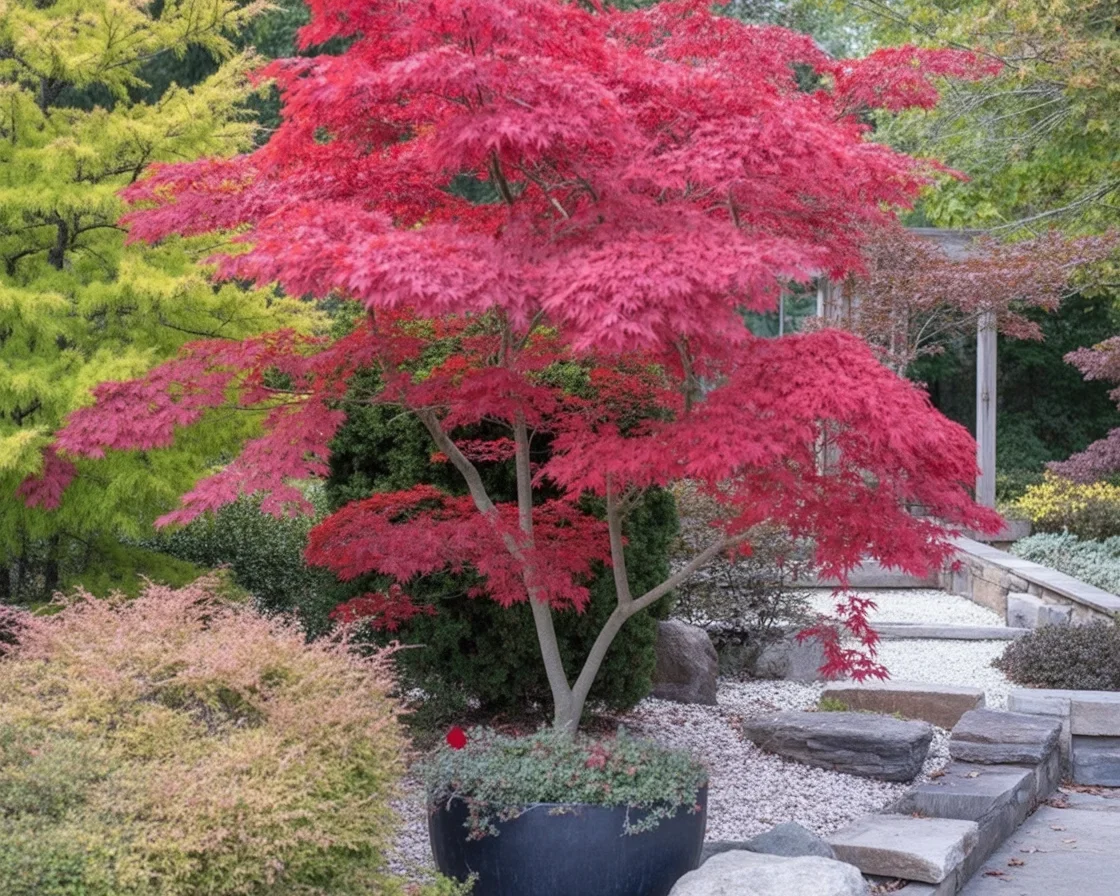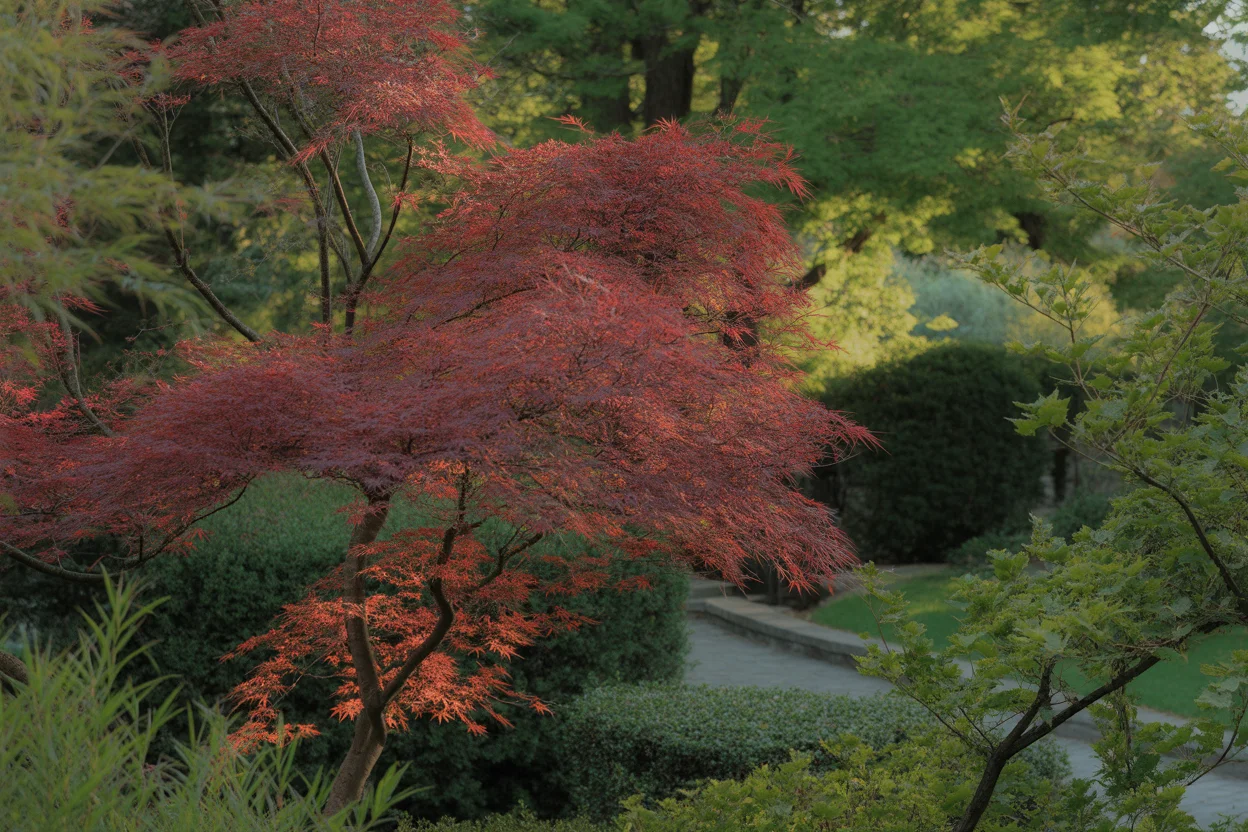Bloodgood Japanese Maple Tree can make anyone stop and stare, right? Maybe you saw one of those fiery red trees in a neighbor’s yard, and you thought, “How do I get that gorgeous color at my place?” But then there’s that fear: what if it turns crispy, or drops all its leaves? Hang with me. I’ve totally been there.
If you want your yard to feel special, even kind of magical, you need to check out the Bloodgood Japanese Maple—it’s not just another tree. Honestly, once I learned how easy it actually is? I felt way less intimidated. If you’re also curious about other showstoppers, peek at growing tulip poplar tree beauty care easy or how to grow and care for red maple trees for some extra inspiration or just ask anyone who’s tried these other fast-growing shade trees too)
Table of Contents
Acer palmatum ‘Bloodgood’
So, “Acer palmatum ‘Bloodgood’”—that’s this tree’s fancy botanical name. Just a little trivia for you. ‘Bloodgood’ is the superstar of Japanese maples, and you’ll spot them all over the place because people can’t get enough of those dark purple leaves. People always ask if it’s hard to look after. Short answer? Not really! Also, it grows in a sort of “vase” shape that makes it look sculpted… even if you forget to prune sometimes (guilty).
My first one survived my “enthusiastic but clueless” phase. It still looks great, plus, it’s not a giant—think 12 to 15 feet tall when grown up. If you want a plant that makes you feel a bit fancy but you don’t need a green thumb, “Acer palmatum ‘Bloodgood’” could be your new BFF. 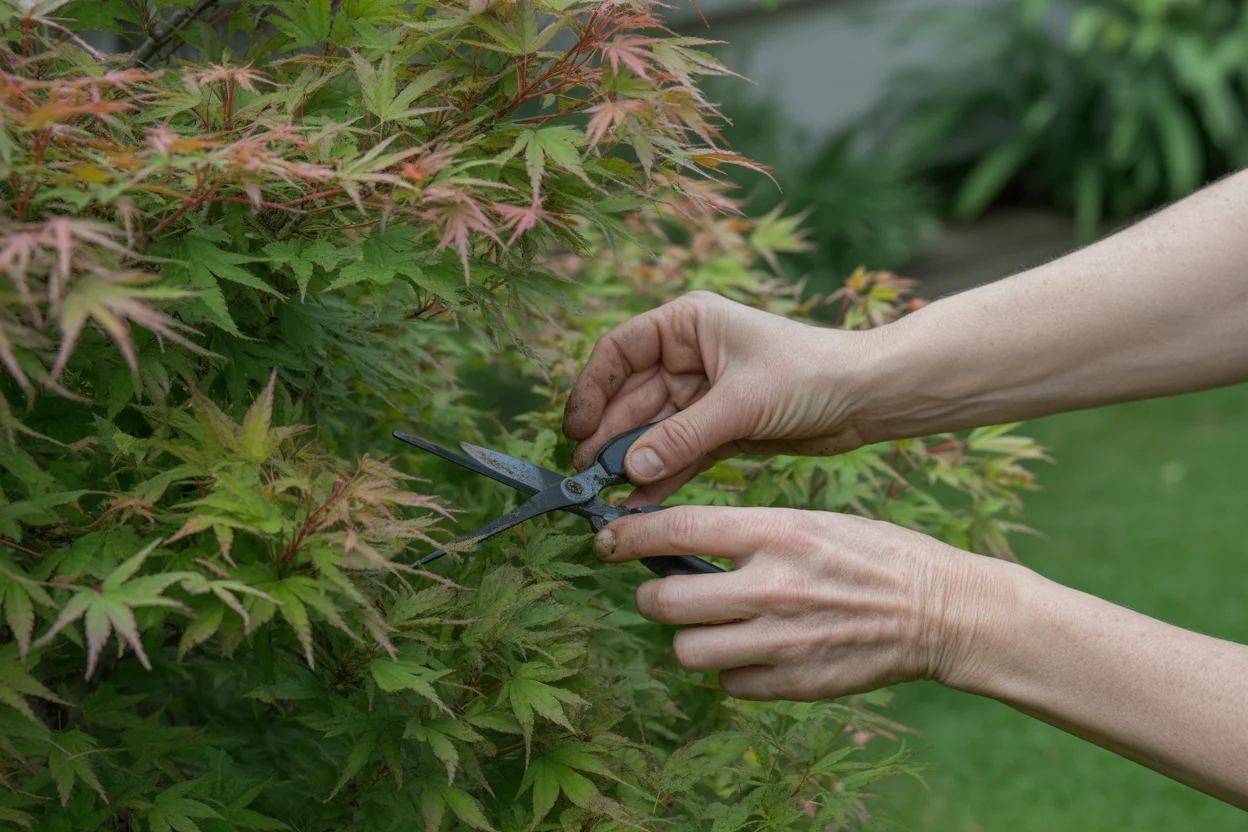
Types of Japanese Maples
Okay, there are so many types of Japanese maples it can make your head spin, not kidding. Laceleaf, upright, dwarf, variegated—like picking a dessert at a five-star restaurant. Bloodgood Japanese Maple Tree is an “upright” type, so it’s more tree than shrub. The leaves are bold and not frilly, and the color is—hello—eye-catching.
Some folks go wild and collect a bunch of different types. That’s fun, too, if you have the space (and can handle the garden envy from your friends). But honestly? If you want strong color and solid WOW factor, it’s really hard to beat the Bloodgood. Want privacy in your yard too? You might enjoy checking out these 7 fantastic fast-growing privacy trees for another look. 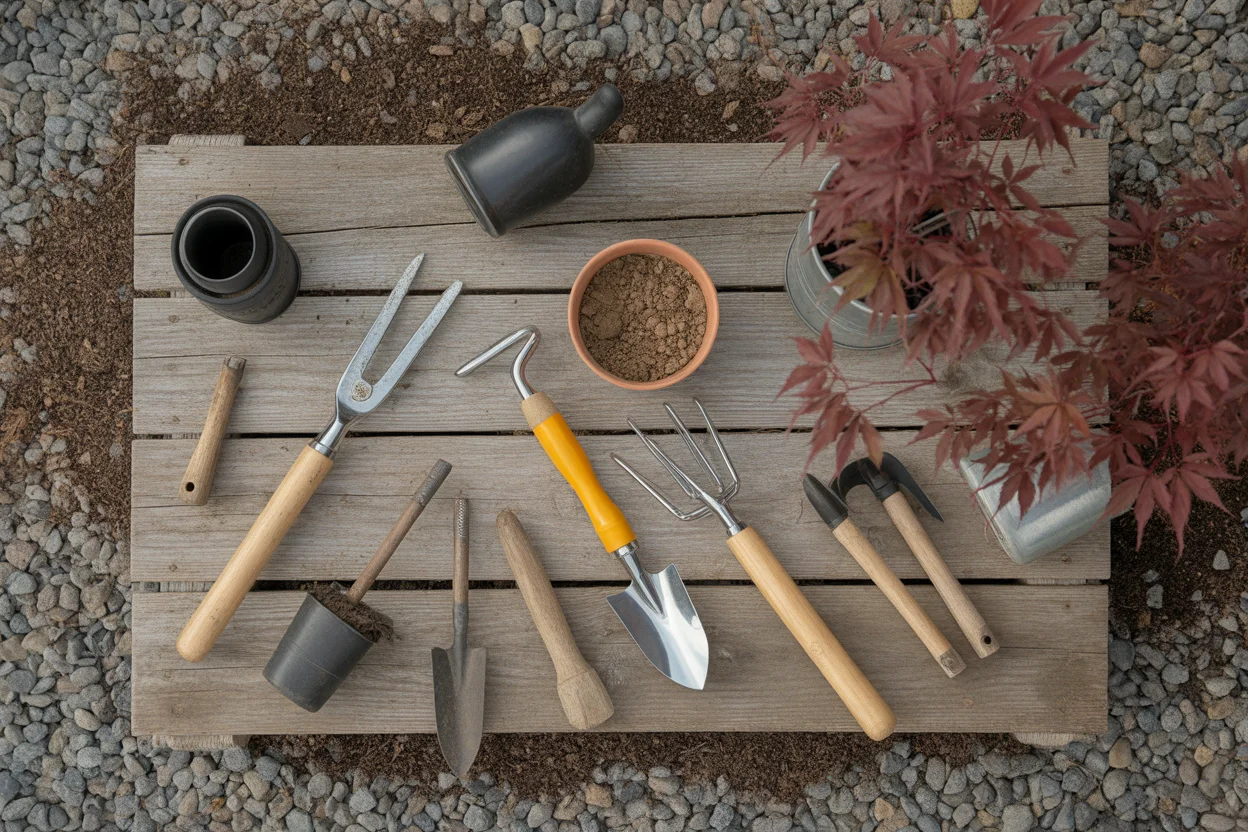
Bloodgood’ Japanese Maple Tree Care
I get it—planting a tree seems stressful. But Bloodgood Japanese Maple Tree isn’t a diva. You don’t need to coddle it. Give it well-drained soil, don’t bury the trunk, and you’re halfway there. Watering is crucial for new trees though. Too much soggy soil? You’re in trouble. Too dry, also not great. Clay soil can be a pain, but add some compost, and you’ll be good.
Sun matters, but I’ll talk about that more below. Oh, and mulching around the base helps keep the roots happy. Honestly, half the time I just use shredded leaves from last fall. Cheap and cheerful! My advice? Check it every couple of days at first and adjust as you go—you’ll figure it out. 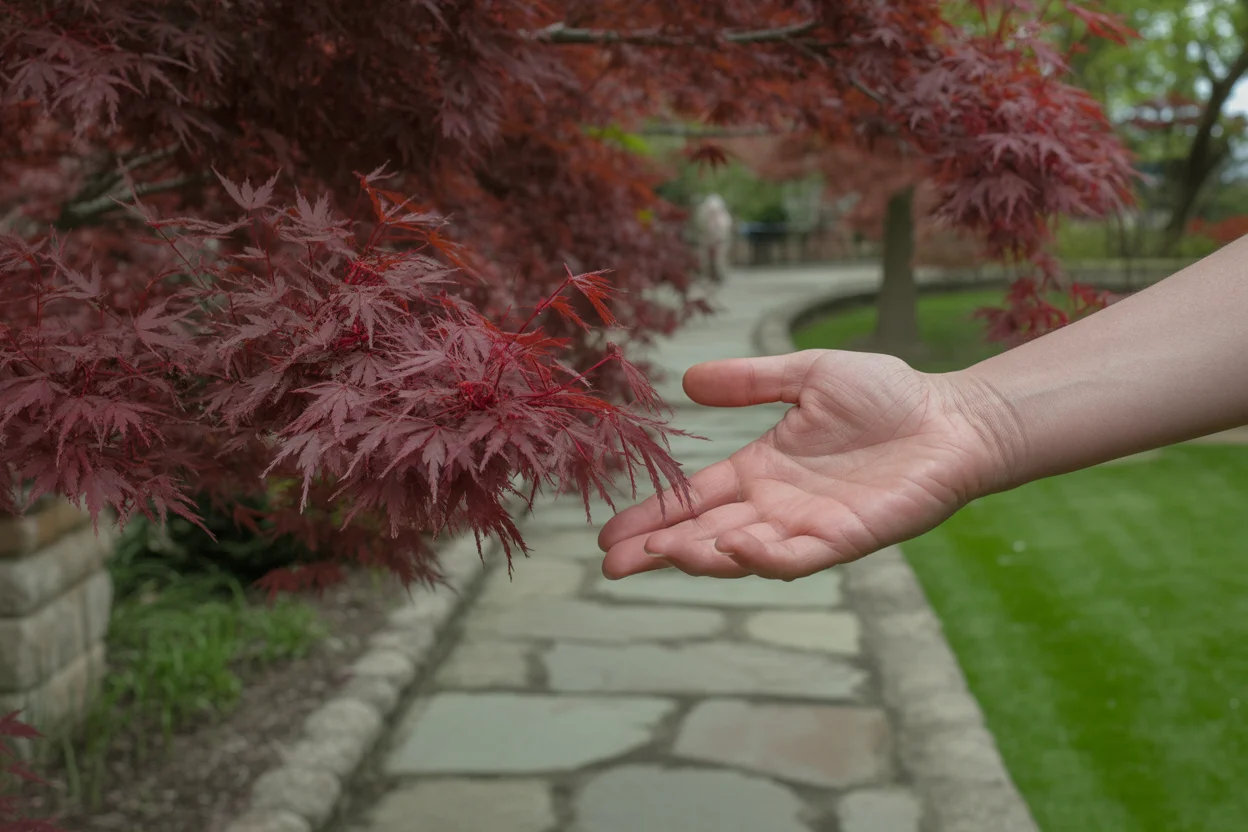
Select Size
This part is actually super practical. When you buy a Bloodgood Japanese Maple Tree, you get size options. Want an instant statement? Go bigger—ask for a 4-6 foot tree; it’s showy right from the start, but costs more. For a budget move (I do this a lot), pick a small one-gallon or two-gallon size. Waiting a few years isn’t so bad, and honestly, watching it grow is rewarding.
Ask the nursery about the root ball—healthy roots are everything. It’s tempting to grab the tallest guy there, but I’d say choose a sturdy one, no yellow leaves or mushy spots. Sometimes it’s good to be patient. I mean, some things are worth it, right?
Brilliant Scarlet Red Unique to this Bloodgood
One word—stunning. The color is what everyone talks about. Bloodgood Japanese Maple Tree has that brilliant scarlet red you don’t really see on other trees, especially in fall. Some seasons, the leaves look more maroon or even a little purple, which—sorry, I’m a nerd for foliage—just makes it more interesting.
Not all Japanese maples can pull off that rich, saturated red. It truly pops against everything else in the yard. My neighbor actually stopped by just to ask about “that gorgeous red maple” last October. That’s when I knew I’d made a good choice.
“Our Bloodgood Japanese Maple WOWS every visitor! I barely do anything and it always comes back looking amazing. Best decision for our small yard.”
Full Planting & Care Instructions
Planting isn’t rocket science, I promise. Here’s what works for me:
- Pick a partly shaded spot. Sun all day is too harsh, but it wants a little morning light.
- Dig a hole twice as wide as the pot. Not deeper, or the trunk might rot.
- Loosen the roots—gently!—before setting it in.
- Backfill with good soil, mixed with compost if you have it.
- Water right after planting, until the soil feels moist but not swampy.
That’s it. Mulch around the roots, but don’t pile mulch up against the trunk. Check your tree after rain or droughts (just a peek). Honestly, the more you fuss, the more you find ways to keep it happy—but don’t overthink every little thing.
Common Growing Problems
Troubles? Yep, it happens, but nothing that should scare you. The biggest headache is leaf scorch on super hot afternoons, especially if the weather jumps from cool to super sunny. Dang, it happens fast sometimes. Wind can be rough on young leaves, too—they get a tad crispy at the edges.
Root rot is a real risk if your soil stays wet—bad drainage is the villain here. Bugs are rarely an issue, but keep an eye out for aphids. If you see sticky stuff or odd bumps under leaves, a quick rinse usually fixes it.
If you want even more info on trees that don’t give you too much trouble, these 10 fast-growing shade trees are worth a look. I’ve had good luck mixing those with my maples for variety.
For more gardening tips follow us on Pinterest
Why I Think You’ll Love This Maple
So here’s the deal. Bloodgood Japanese Maple Tree is absolutely worth it for anyone—even if you’re not some “master gardener.” The color will make you do a double-take, and with just a bit of weekly watering and watching the soil, you’ll get a tree that’s the star of your whole yard. If you’re hungry for more outdoor magic, here’s more on the Bloodgood Japanese Maple Tree at PlantingTree and Bloodgood Japanese Maple Trees for Sale at FastGrowingTrees.com. You’re one good decision away from a backyard that feels special, trust me. 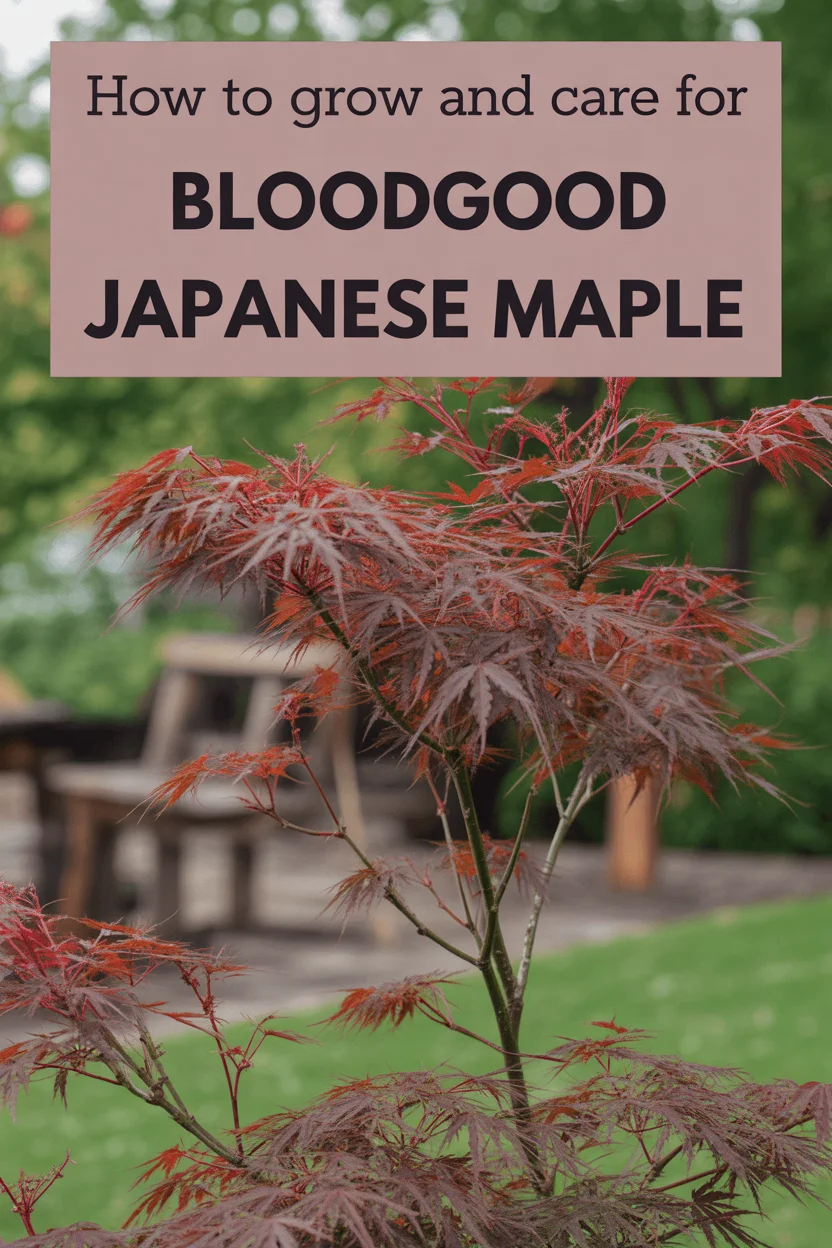
FAQ
Where should you not plant a Japanese maple tree?
Basically, they hate wet feet. So, don’t plant a Bloodgood Japanese Maple in a spot that gets soggy or floods after rain. Avoid super windy corners—it’ll dry out the leaves. Definitely skip that scorching all-day sun spot, unless you want crispy-brown instead of gorgeous red. Root systems like room, so, not cramped by concrete or huge shrubs. Give them their “personal space.” If you’re not sure, do a quick puddle test after a rain—to see how long water sits there.
Do Bloodgood Japanese maples like sun or shade?
Oof, big question. As a rule, Bloodgood Japanese Maple loves some morning sun and afternoon shade. Too much sun and the leaves could look burnt or faded, not that famous scarlet red. Too much shade, though, and you’ll get weaker color and leggy branches. Dappled light from bigger trees is honestly ideal. So, if you can, find a spot where it gets just the right amount—your tree will thank you.
How often should I water a newly planted Bloodgood Japanese Maple?
Don’t overdo it. Right after planting, soak the soil so the roots settle in nice and tight. For the first couple of weeks, aim for deep watering every three or four days if there’s no rain. After that? Weekly is usually enough, but feel the soil—if it’s dry two inches down, water again. Less is more with maples, but in heat waves, give it a drink.
Can you grow Bloodgood Japanese Maple in pots?
You totally can! They look lovely on patios. Choose a big enough pot with drainage holes, use light soil, and water a bit more often since pots dry out quicker. Protect it from deep freezes if you’re somewhere super cold. Sometimes, the color is even more intense in containers. Win-win, if you ask me.
Is Bloodgood Japanese Maple fast growing?
It’s pretty steady—not super slow but not a wild child either. Expect about one foot of new growth a year if it’s happy. With a little patience (and decent soil), you’ll have a thick, bushy tree in a few years. Mine went from a skinny stick to a head-turner in about four, so it’s not ages and ages.
